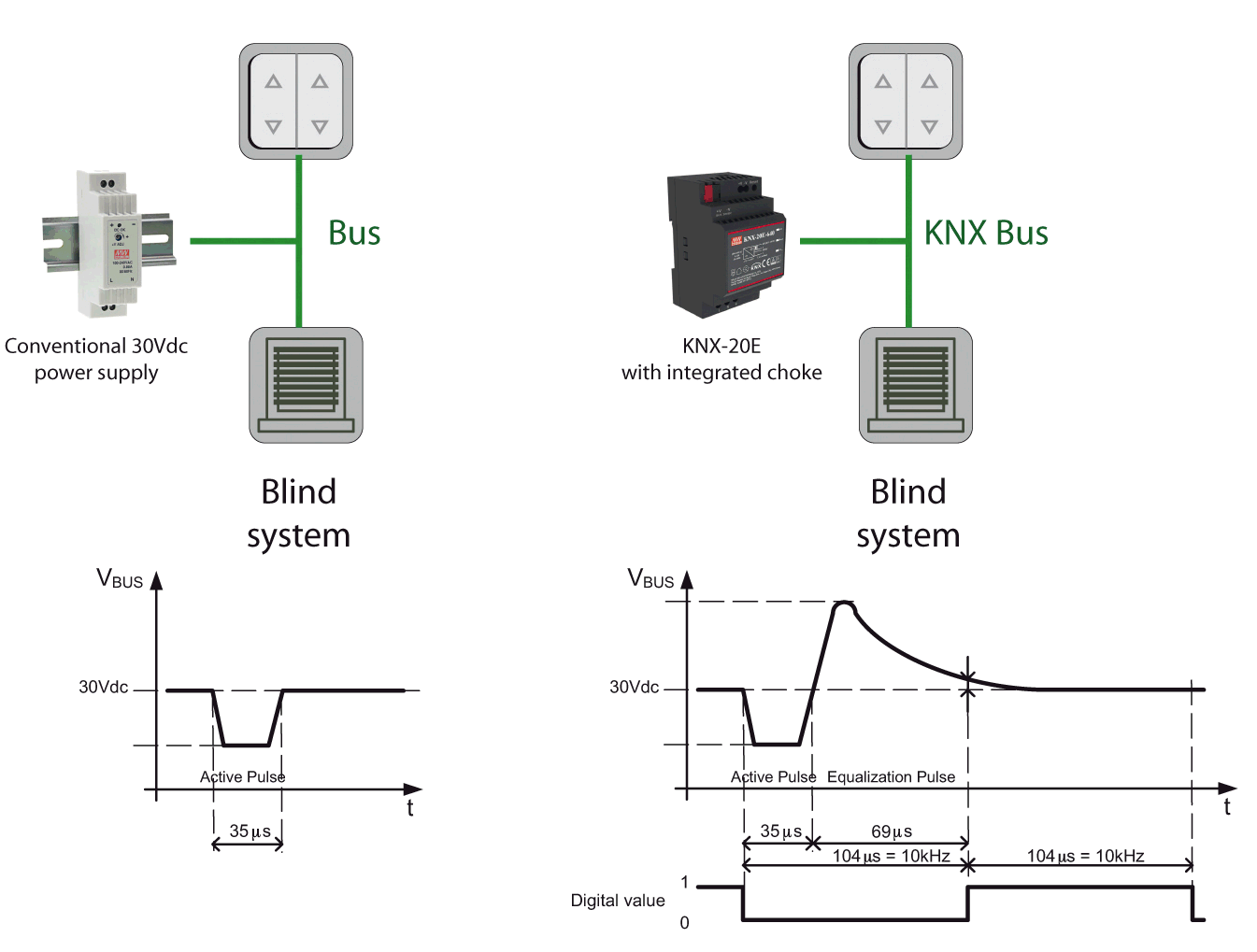These days, modern buildings need complex systems with intelligent controls, low energy consumption and a high level of safety. KNX systems ensure trouble-free operation.

The problem
In the past, systems for controlling the technical equipment in buildings were extremely complicated. Every device required its own physical control cable and components, and a lot of effort and expense went into planning and installation. In the operational phase, too, maintenance issues were a problem. What's more, the high number of cables represented a serious fire load.
Example and solution
For these reasons, a new manufacturer-independent installation model for communicating between practically any controls, sensors and actuators was developed: the KNX system. While an automated building management system can be very simple and may only involve a few connected devices, KNX can also be used to handle even highly integrated systems with several thousand devices in a straightforward way.
In both cases, special power supply units for the bus system are necessary, and cannot be replaced by conventional power supplies.
• Example 1 (Roller shutter controls): The smallest possible application, involving a single wall-mounted switch and an actuator, takes its power from a standard 30V power supply. When a user flips the switch to control the electrical shutters, the system does not work. The switch can transfer the signal (active pulse) to the bus, but the actuator is not able to process or respond to it. The reason: The signal is not a complete, correct KNX signal.
• Example 2: A KNX power supply with an integrated choke is added to the system. When the switch transfers the active pulse signal, the choke, because of the action of the coil, reacts immediately with an equalizing pulse. The active and equalizing pulses are then combined to create a correct signal (''0'') (duration: 104 µsec). In the next 104µsec, another combined waveform for ''0'' or no waveform (only 30VDC, for ''1'') follows. The enumeration ''0'' and ''1'' represents the actual command from the switch to the shutter system's target actuator. This simple example system now operates just as it should. A power supply with an integrated choke is therefore a necessity.

• All other devices, e.g. lights, an HVAC system or alarm system, work on a common bus using the same transfer principle, thus delivering maximum flexibility. Every KNX device requires a maximum of 10mA from the power supply to be able to transfer or receive a signal.
How big can KNX products be?
• Tip: All KNX devices including the controller are usually installed in a single switching cabinet inside a building. The dimensions of the KNX products should therefore be designed for a uniform installation in accordance with DIN 43880. The width is set as one or several standard units, with each individual unit, by definition, being no wider than 18mm. A main power supply delivering 640mA is four or more standard units wide.
Advantages of KNX systems:
• The right power supply is a key component, and enables the smooth operation of all devices connected to the bus. For modern residential and commercial buildings, a KNX power supply is indispensable.
As a reliable and safe solution for a KNX bus system, Mean Well has developed the KNX-20E. Complementing the KNX-20E, MeanWell also offers the KDA-64, which features a KNX-DALI interface.
We offer high-quality power supplies of all kinds. Our sales team can provide customer-specific advice about KNX systems, and can also answer any questions on the subject of power supplies.












